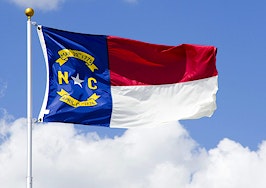As I was scanning desperately for a gap in my calendar to shoehorn in some vacation, I quickly found the beautiful patch of open space surrounding the Fourth of July. Of course, on my other screen (because I constantly multitask), I was brainstorming blog ideas and hoping for inspiration.
So I began thinking: Revolution. Freedom. Independence Day. Who needs independence? Well, I want to be independently wealthy, but that’s not much of a blog.
And then it hit me.
It’s time for the MLS to declare its independence.
The symbiotic Realtor association/MLS model has run its course. Here is why:
1. It’s antiquated.
The MLS as a concept started in the late 1800s (that’s not a typo) when real estate agents would gather at their local associations to share information on available listings and agree on compensation.
“I have a buyer; you have a listing. How much will you pay me?”
At that time, this system made sense. We are talking about a time when the telephone was a brand-new invention, and the only way to talk to someone down the street was to walk over and hope they were home when you got there.
This model was a useful and necessary way to make sure brokers got paid and information was shared. Since then, the speed and means of communication have evolved immensely, and the ability to quickly and easily iron out who is paying for what is a couple DocuSign clicks away.
2. It’s no longer needed.
The National Association of Realtors was founded in 1908, many years before most states had any sort of licensing and regulations about what a real estate broker even was.
In fact, up until 1972, NAR was known as the National Association of Real Estate Boards. Looking at that name in today’s language, it sounds more like a licensing board than a trade group.
Again, at the time that made sense. States had no clear rules; someone needed to bring order and consistency to how real estate was bought and sold.
Today we have a truckload of federal regulations and agencies, and every state has an entire division of government dedicated to overregulating and overcomplicating real estate brokerage.
NAR doesn’t need to regulate the real estate marketplace — we have a host of folks playing that tune now. If you are a licensed broker, you get to sell real estate. That’s it; story over.
3. It’s not good for business.
No other industry of similar size has a quasi-regulatory trade organization that controls the marketplace. (If you know of one, please send me a message, as I love to learn.)
NAR, with its junior state and local associations, is a trade organization, and it’s a large lobbying group.
The MLS is a marketplace for its users — in this case, real estate brokers.
The solution (without all the answers)
The solution is simple: It’s time for MLS systems to be a marketplace, not the beholden baby sister to a trade organization.
The first step, which a pitifully small number of forward-thinking MLS systems have done, is to remove the cover charge at the door in the form of NAR membership needed to be an MLS participant.
A license from the state should be the barrier to participation in a regulated market, not membership in the local Realtor association.
Stuck on the idea of wanting only to work with fellow Realtors, and that whole “no membership, no guarantee of cooperation/compensation” argument?
I suppose you could refuse that offer from the non-Realtor agent calling you. But let me know how that goes when they call your state regulator — or, more appropriately, when your seller does.
It’s pointless to get into the semantics of Realtor versus non-Realtor if we are talking about brokerage. License plus buyer equals qualified to earn.
Step two is to remove the increasingly Byzantine rules about how brokers can use the listing information from the MLS. In the end, they only hurt the brokers paying for the MLS and leave us increasingly irrelevant in an ever-connected, instant-gratification world.
Say this is opening access to devious players, shoddy paper brokerages and the like?
The data game is over — move on. Go to the library and look online (if you are still arguing about the publication of properties for sale online, I assume you need to go to the library to visit the Internet).
Look at Movoto, ZipRealty and the newest end-to-end platform, Xome. (It’s backed by a big financial services company, by the way — watch out, folks.)
Outside of these players, MLS data is available via Zillow, realtor.com (and let’s remember realtor.com has nothing to do with Realtors at this point in truth) and a host of other sites.
Should we band together and kick them off? Sure. Let me know how it plays out when Zillow — which, based on surveys, commands a greater level of respect from the general public than the average agent — gets to tell millions of consumers that NAR doesn’t believe the public should be able to see all those listings online without a Realtor.
These industry “disrupters” are armed with better tech and better public opinion, and they are unburdened by myriad rules that prevent innovation by brokers.
As long as MLS systems (and agents as their users) remain shackled by politics and unable to move quickly in the marketplace, efforts by outside players will continue to bypass agents as a whole, and make “Realtor” a less and less relevant thing in the market.
As I finish writing this and also finish up my Kayak booking online for my vacation (hey, I needed a break to clear my head), I look again at my calendar and hope that someday, sprinkled somewhere between Cinco de Mayo, Bastille Day and Independence Day, I see another date added soon — MLS Freedom Day.
I just hope I’m not too old to throw out some firecrackers and run around with a sparkler when it does.
Jason Cox is the managing partner for the Aedos family of companies. You can connect with him on Twitter or AngelList.
Inman Connect San Francisco is right around the corner — register now and save $200!








